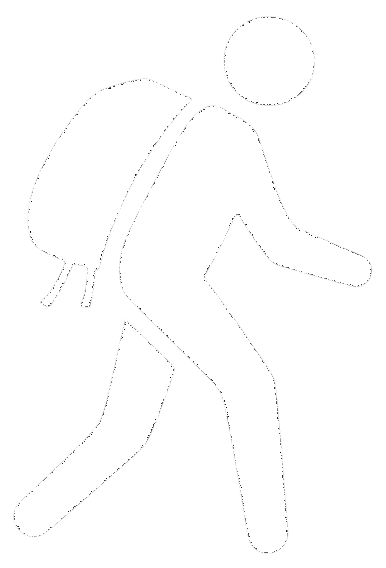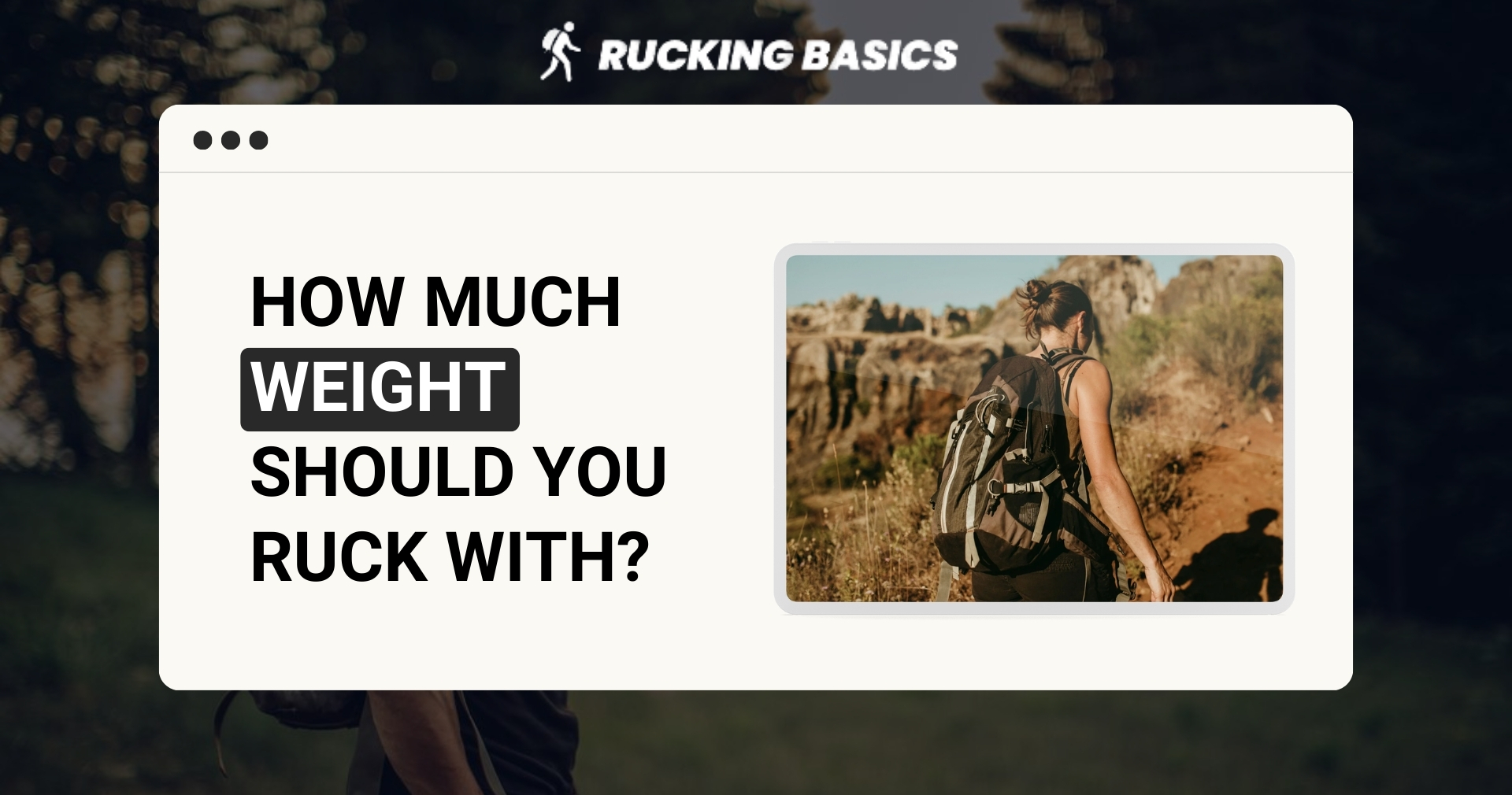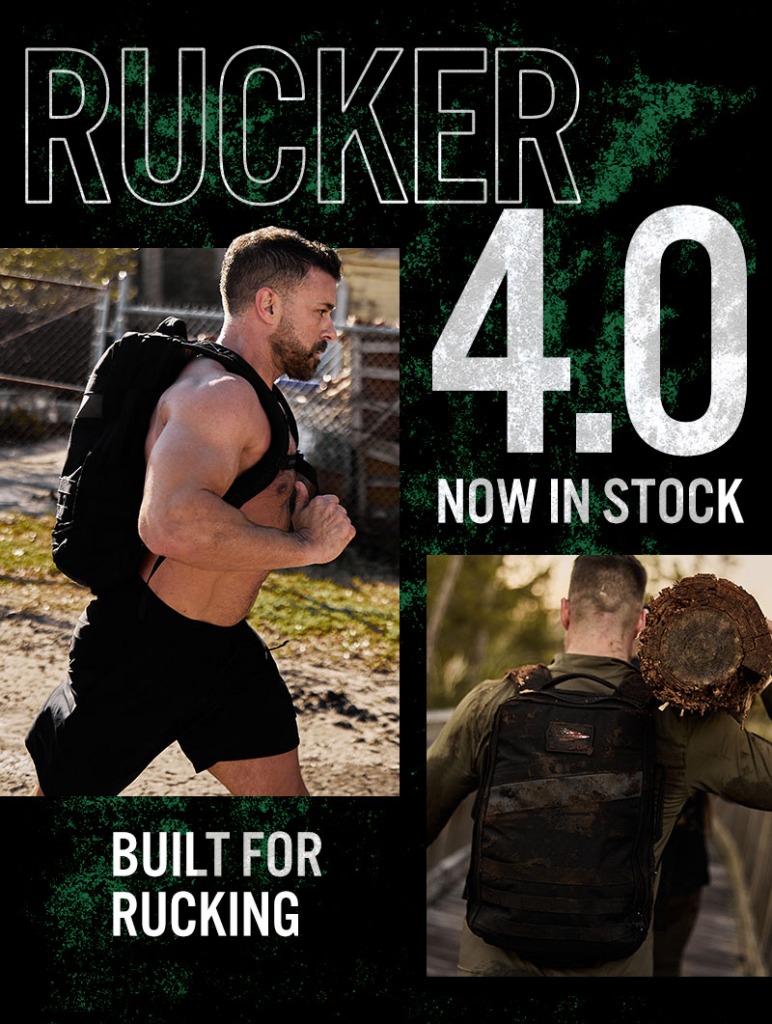Rucking has become widespread in the last five or ten years. It’s popular not just among fitness enthusiasts but also among regular people seeking a challenging yet rewarding workout experience suitable for different ages and fitness levels.
One of the fundamental questions asked by beginners and experienced ruckers alike is: How much weight should you carry? I can’t give you a universal answer because there are so many influencing factors, like your age, health, fitness level, goals, terrain, and so on.
That’s why I decided to write this comprehensive guide, explaining everything about selecting the optimal weight for rucking and considering various factors to ensure safety, effectiveness, and enjoyment.
Factors to Consider When Choosing Rucking Weight
So, as I mentioned above, each of us has to analyze different factors before deciding on a suitable rucking weight. Following aspects are most important in my opinion.
Body Weight, Fitness Level and Experience
Let’s start with your body weight. If you weigh 180 lbs, you shouldn’t carry 90 lbs in your rucksack. Next, be realistic about your fitness level. Just as you will not play a tennis match in the best of 5 sets because you are not physically fit to run and hit the ball for 4 hours, you should not ruck with an unreasonable weight.
Of course, experience is also important. If you have been dedicated to this activity for years, then you certainly know your body, and you will know what the optimal weight is. Beginners should be extra careful because a certain weight may seem easy, but remember that you should carry it for hours.
And if you’re up for an extra challenge, trying out rucking at night can add a new layer to your routine. Night rucking can test your focus and situational awareness, making each ruck a unique experience.
Terrain and Environment
Again, it is logical to consider terrain and environment. Doing that quick session of urban rucking in a local park and going to the mountains is not the same.
Uphill climbs, rough terrain, and adverse weather conditions require adjustments in weight selection. Otherwise, you risk your safety. If you are going on a new trail that you are unfamiliar with, reduce your usual rucking weight. It’s better to be safe than sorry.
Duration and Distance of the Ruck
The duration and distance of the rucking influence the weight you should carry. Feel free to increase the weight a bit if you decide to go on a shorter, more intense ruck. Longer rucks, particularly if you’re going to cover a distance you’ve never covered before, necessitate lighter loads to sustain energy levels and prevent fatigue. You don’t want to have to quit halfway through just because you misjudged your capacity.
Gear and Equipment
My advice is to invest money in a rucksack, footwear, suitable clothes, socks, hydration bladder, high-quality food, etc. All that will help you ruck longer while carrying heavier weight. Yet, if you are not properly equipped, do not push because you may suffer an injury. Also, don’t forget to check how much the backpack can withstand. If you don’t have a specialized rucksack, chances are that your regular rucksack will fall apart before the finish line.
Goals and Objectives
I always remind my clients to consider the goal of any activity. It is very important whether you are doing something for fun, to improve your endurance and strength, or to compete.
Your goals and objectives for rucking will dictate the weight selection. The weight you carry should always align with your objectives. You won’t improve your best time if you add an extra 30lb ruck plate, but you will get stronger, so what do you want?
Optimal Weight for Rucking
I heard from a few fellow ruckers that 10-20% of your body weight is optimal for beginners. I wouldn’t 100% agree with that claim because it’s more of a rule of thumb, but I certainly agree that it’s a weight that shouldn’t cause you problems during the first ruck.
If you look at the army and Marine Corps instructions for the ruck march, the weight in the ruck weight will usually be between 30 and 40% bodyweight, sometimes even close to 50% when we talk about special forces. However, they train for years and prepare for the most strenuous efforts, so these are not guidelines that the average person should follow. Goruck challenge is more than enough for each and everyone of us.
The most important thing is to avoid compromising safety and form. You will do that if you find the balance between challenge and enjoyment. Avoid overloading yourself to the point of risking injury or exhaustion, but don’t shy away from pushing your limits within reason. Without pushing limits, there is no progress.
Progressively increasing rucking weight stimulates muscle growth, enhances cardiovascular endurance, improves overall performance, and prevents plateau.
Too Much Weight: Risks and Consequences
In this case, more is not always better. Sometimes, more is just more. If you carry too much weight, you are likely to experience at least one of these problems, and usually more of them.
Injuries
Carrying too much weight combined with repetitive movements over long distances increases the chance of experiencing strains, sprains, or overuse injuries such as shin splints enormously. (1)
Many long-distance runners, such as marathoners, have problems with shin splints and stress fractures because they overload their musculoskeletal system too much. Your goal is to be consistent, not to do one long ruck with 60 lbs and then spend a few weeks in bed while going to physical therapy and avoid strength training.
Impact on Posture and Biomechanics
Human biomechanics are highly complex. Every small change can lead to improved performance, but also injuries, deformities, changes in posture, etc. Your joints and spine hate it when you change positions because you compensate once you become too tired.
Maintain proper posture and movements throughout the ruck. Ensure your energy and focus remain steady in the latter stages of the ruck, avoiding a lumbering stride similar to a Sasquatch. That’s why the weight must be appropriate in order to keep the same movement patterns throughout the entire ruck.
Psychological Stress and Burnout
After all, rucking should be a relaxing activity that will make you stronger, more durable, and happier. Rucking should connect you with nature, lower your stress level, and stimulate happiness hormones.
Carrying an excessively heavy load will cause precisely the opposite and will take a toll on your mental well-being, causing psychological stress and burnout. (2) The last thing you need after a hard work week is burnout on supposedly relaxing activities. The mental fatigue associated with carrying too much weight can detract from the enjoyment and benefits of rucking, leading to decreased motivation and performance. Eventually, you will quit this amazing activity.
Too Little Weight: Limitations
Striking balance is important for most things in life, and rucking is no exception. While too much weight is detrimental, if you use too little weight, you do not practice rucking but a regular stroll in the forest. Rucking differs from other similar activities in its difficulty but, therefore, brings more benefits.
Inadequate Training Stimulus
The SAID principle, an acronym for Specific Adaptation to Imposed Demand, is my favorite approach to training. It means that the body adapts only to what we put it through. This is why sprinters do not run marathons and vice versa, although both are high-profile athletes.
Rucking with too little weight won’t provide an adequate training stimulus, resulting in zero or minimal physical adaptations and performance improvements.
Minimal Physical and Mental Benefits
No, you will not strengthen enough if your backpack is empty. You will not even experience mental benefits because the mind loves when we make an effort. Remember the last time you invested maximum effort in achieving a goal, any goal. You felt great once you succeeded, right? That’s exactly why you need weight on your back as you briskly navigate challenging terrain.
Wrapping Up
Other than going to heavy to soon, you don’t have to stress that much about selecting the optimal weight for rucking. I’m not saying it’s irrelevant, but it’s easy to adjust.
Test the weight on shorter distances, then increase or reduce it depending on how you feel. It’s normal to progress and add weight over time, but don’t be disappointed if you have to reduce weight due to an injury or you’re just not in top shape that very day. Any experienced athlete will confirm that sometimes we are full of energy, while other times we must reduce our effort. It does not mean that you have regressed.
Ultimately, when deciding how much weight you should ruck with, just listen to your body and experiment with different weights and strategies — that’s how you will surely find the perfect balance between challenge and safety.
Frequently Asked Questions
Is there a recommended rucking pace, or can I go at my speed?
No, there is no recommended pace, and that’s where the beauty of rucking lies — in its adaptability to your fitness level and goals. Whether you prefer a brisk walk or a steady jog, the key is maintaining a pace that challenges you without causing exhaustion or injuries. Listen to your body, find a rhythm, and later adjust it.
Can I ruck with a weighted vest instead of a backpack?
Yes, rucking with a weighted vest is a convenient alternative to a backpack, and I recommend it for shorter rucks. However, for longer rucks, you will need more storage space for rucking plate, food, hydration, and other necessities than weight vests can provide.
What is the role of rucking in weight loss?
Rucking can be a valuable tool in weight loss since it combines cardiovascular exercise and resistance training. You increase your heart rate and calorie expenditure by carrying extra weight while walking, promoting fat loss and muscle toning. Also, because of its low-impact nature, you can practice it for many hours, thus burning more calories.
Can I ruck with my dog, and are there any safety considerations to remember?
Rucking with your furry companion can be a fun and rewarding experience for both of you. So, this question totally makes sense. There are a few factors to consider before going on a walk with your dog – its fitness level, breed, and age. Don’t take your dog immediately on a ruck march; start with shorter distances and gradually increase the intensity to ensure your dog can keep up comfortably. Dogs with longer fur can struggle in higher temperatures, so think about the weather and bring plenty of water and snacks.
Is urban rucking practical, or is it better suited for nature trails?
Urban rucking can be just as practical and enjoyable as hitting the trails, depending on your preferences and surroundings. It is time-saving too because you probably don’t live near the forest. Just be mindful of pedestrian traffic, uneven sidewalks, and potential hazards like traffic and construction zones. On the other hand, whenever you have time, I recommend nature trails because rucking is equally beneficial for the mind thanks to nature and not only for the body.
References
- Bhusari N, Deshmukh M. Shin Splint: A Review. Cureus. 2023 Jan 18;15(1):e33905. doi: 10.7759/cureus.33905. PMID: 36819450; PMCID: PMC9937638.
- Maslach C, Leiter MP. Understanding the burnout experience: recent research and its implications for psychiatry. World Psychiatry. 2016 Jun;15(2):103-11. doi: 10.1002/wps.20311. PMID: 27265691; PMCID: PMC4911781.








